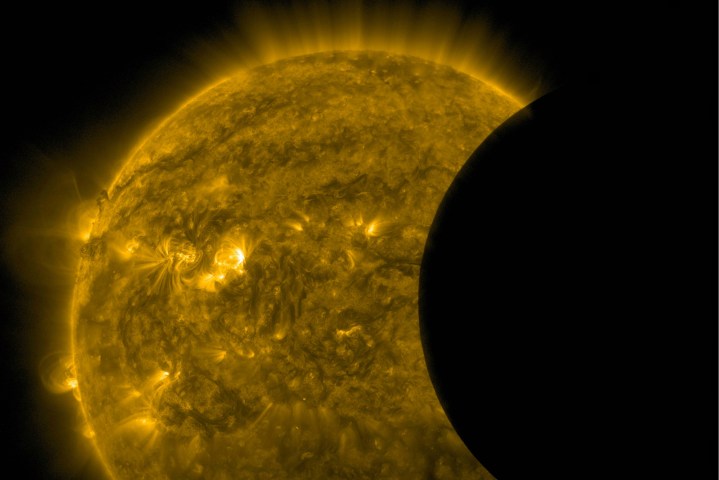
But researchers at the Georgia Institute of Technology devised a way to experience the event not with sight, but with sound, using eclipse data to create an ambient musical composition that depicted the event for people with visual impairment.
Although the eclipse has ended, you can still hear part of the composition here.
“My lab has been turning information into sound for a couple decades, so this is a natural project for us,” Bruce Walker, director of the Georgia Tech Sonification Lab, told Digital Trends. “We often work on projects that help blind individuals get a better sense of what is happening around them.”
Walker and his team, including then-graduate-student Avrosh Kumar, who Walker credited with the creative effort, received a call from AT&T asking them to develop a sort of soundtrack for the eclipse in support of Aira, a device that helps translate the physical world into sound.
The researchers used timing and duration predictions from astronomers to compose a base soundtrack prior to the event. They also reeled through videos of eclipses to get an impression of how witnessing one felt.
“We learned about the changing light levels, the changing temperatures, and associated events like the ‘false dusk’ and ‘false dawn,’” Walker said, referring to the moments during the eclipse when light resembles dusk and dawn, and tricks animals into responding accordingly. For example, birds begin singing and crickets begin chirping.
“In the piece, I wanted to capture the physical process of an eclipse, portray the immensity of it, and the awe of experiencing an eclipse,” Kumar said. “The first section of the piece that starts about 30 minutes before the maximum eclipse is a slowly developing rhythmic movement capturing time. Its tempo increases so slowly that it is almost unnoticeable but every time you pay attention … you feel the change in the environment. While working on this part, I was thinking of the uneventful slow approach of the moon over the sun.”
The musical energy increases about 15 minutes before totality, as the moon’s path over the sun becomes more drastic.
“After this transition you hear a duel between the sun and the moon,” Kumar said, “the harsh sounding sun and the mellow sounding moon.” These two elements compete until totality when all that’s left of the sun is its corona, peeking over the edges of the moon. “Then the sun re-emerges into another hopeful post-eclipsical phase and fades into the day.”
Live musical alterations were added during yesterday’s event to depict changes in brightness and barometric pressure resulting in a truly visceral listening experience.


